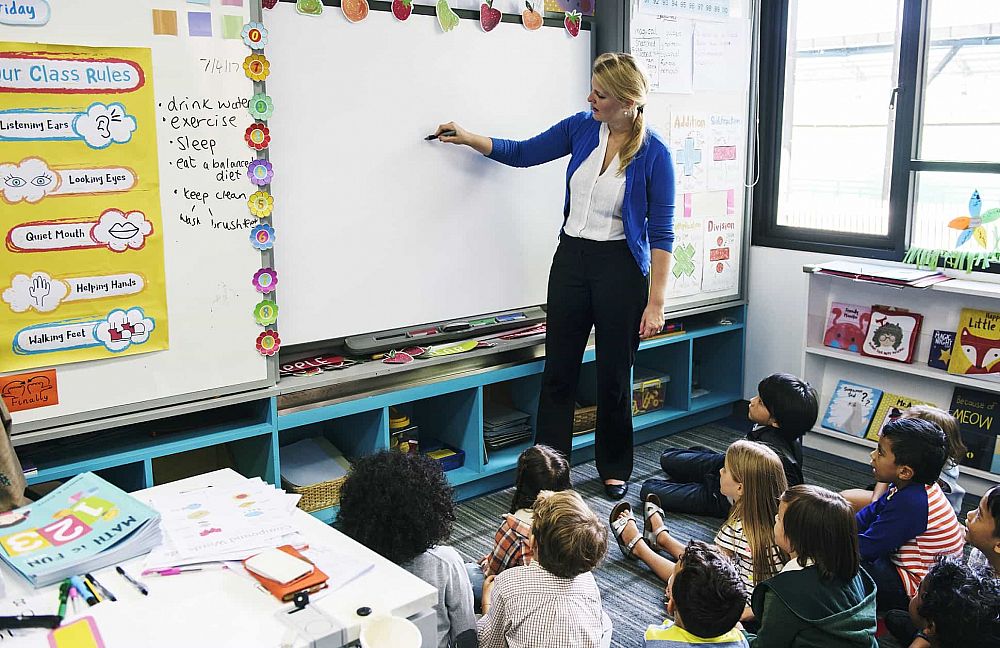What My TEFL Course Taught Me About Classroom Management

When a student describes a class that they've enjoyed, they often attribute their positive experience to the interesting content of the class, friendly classmates, or an inspiring teacher. A well-organized class can contribute to building these healthy student-student and student-teacher relationships, as well as create an environment in which a student can comfortably listen and learn the content given. From this course, I've learned how an effectively managed classroom can have a significant impact on the student's experience, and furthermore can help a student succeed in an EFL classroom.
Table of Contents
"My Personal Favorite is the Horseshoe Arrangement"
"Pairwork can help students create strong relationships with each other"
"A teacher with a dull and monotonous voice can easily bore and demotivate a student"
"A well-managed class can really set up a fun and engaging environment"
What will you learn from your TEFL course?
This post was written by our TEFL certification graduate Gabriella P.
"My Personal Favorite is the Horseshoe Arrangement"
Classroom management can be described as "the skill of organizing and managing the class, having a friendly, relaxed manner and maintaining discipline." One of the first steps to creating a comfortable environment that helps nurture positive relationships in the classroom is choosing a suitable classroom layout. My personal favorite arrangement I learned about during this course is the horseshoe arrangement. This seating arrangement is ideal for smaller classes, and can establish an intimate environment for the teacher and students. This intimacy can create a comfortable atmosphere for English learners to participate, and even take risks when trying to build fluency. Of course, a teacher's decision on how to arrange their classroom may be impacted by logistical factors such as the space available and types of furniture to hand. This layout is just one example of how the arrangement of a classroom can help put students at ease, and make them feel relaxed enough to interact in lessons and step out of their comfort zone - both important steps in learning a new language.

Also read: Getting Student Placement Right - The Best Desk Arrangements for EFL Students
"Pairwork can help students create strong relationships with each other"
Organizing classroom activities to be engaging and interactive can also help students build rapport with each other and create a positive environment in the classroom. A teacher that is consistent in coming to class with a plan for classroom activities and is consistently prepared with the materials will also establish rapport and trust with the students. Grouping can also play a big role in these classroom activities. Pairwork can help students create strong relationships with each other, help to share ideas, and can be more suitable for shy students who may not want to interact with an entire classroom. Bigger group activities are helpful in increasing talk time and interaction, and students can learn from each other if the group is well-mixed with weaker and stronger students. In order to effectively organize pairs, the teacher must make sure that personalities in the classroom don't conflict, and that they are monitoring groups in a way that is not superimposing, but is helpful in guiding the students through the activities. The organization of these activities can have a big impact on the student's opportunities to build relationships and practice their new language skills.

Also read: Top Online Lesson Plan Resources for New and Advanced Teachers
"A teacher with a dull and monotonous voice can easily bore and demotivate a student"
Finally, the presentation of the teacher in front of the students is a detail that can really affect the way a student views the teacher and how the student views the atmosphere of the classroom. A teacher that makes eye contact with students shows them that the environment is interactive and involves the students. It can also help hold the attention of the students so that the classroom does not get unruly. Eye contact can also be a powerful tool for the teacher to alter the pace of the lesson depending on the looks of the students. These looks may indicate confusion or understanding. Another part of a teacher's presentation is their tone of voice. A teacher with a dull and monotonous voice can easily bore and demotivate a student who may already be unmotivated, or may just discourage those who are motivated. A teacher with an excited, clear, projected, and varied voice can help a student feel more engaged in the lesson and create interest in a lecture that may otherwise be boring. The teacher's self-presentation is a detail that can make a huge impact on the students' learning experience.

Also read: How to Motivate High School Students in the ESL Classroom
"A well-managed class can really set up a fun and engaging environment"
From classroom arrangement, management of group activities, and teacher presentation, we can see that a well-managed class can really set up a fun and engaging environment for an English language learner. While fun doesn't necessarily equal high marks, it can definitely help students to want to listen and stay engaged in lessons, which can in turn lead to a student's success. It is up to the teacher to put in the effort to present themself in a positive way, arrange a classroom sensitively and logistically, and prepare class activity materials. While it may seem like quite an effort, the result is an effective and positive classroom environment that can inspire English learners.
Also read: 8 Important Tips For Good Classroom Management
What will you learn from your TEFL course?
Apply now & get certified to teach english abroad!
Speak with an ITTT advisor today to put together your personal plan for teaching English abroad.
Send us an email or call us toll-free at 1-800-490-0531 to speak with an ITTT advisor today.
Related Articles:
- Top 10 Mistakes to Avoid in the Classroom While Teaching English Abroad
- The 5 Most Common Types of EFL Students and How to Deal with Them
- 5 Reasons to Take a TEFL Course Right Now - Even If You Are Not Leaving Yet
- 3 Steps for Dealing with a Student with Challenging Behavior
- The 10 Most Common Types of EFL Teaching Jobs
- 5 Simple Tips to Improve Your Classroom Management Skills



